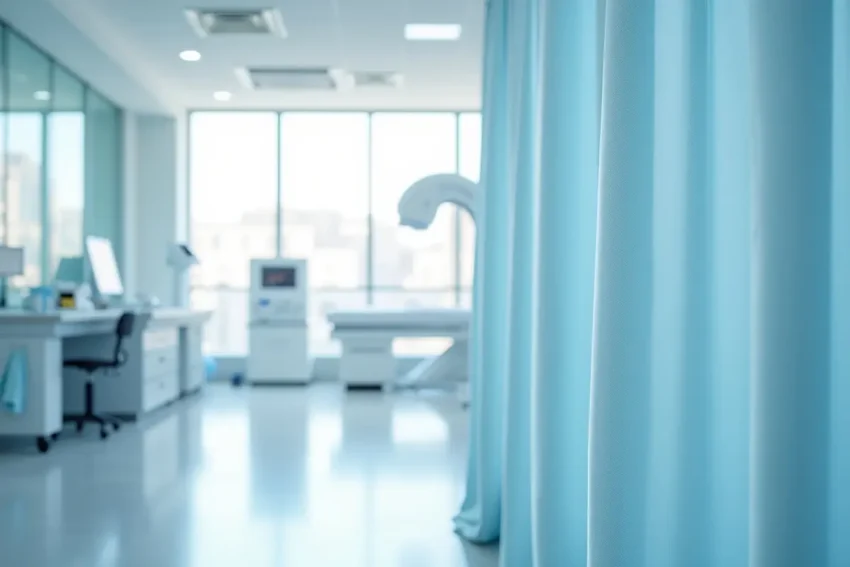Why Medical Curtains Are Essential For Modern Medical Facility Design

Medical facilities focus on better serving patients and maintaining a functional and efficient environment. Medical curtains can improve privacy, infection control, and aesthetic appeal. The importance of these curtains transcends their functional uses, as they contribute to the experience within healthcare settings. Keep reading to learn more about the reasons why medical curtains are a valuable investment in modern medical facility design.
Contents
How to Find the Right Medical Curtains
Selecting the appropriate medical curtains requires careful consideration of functionality, material, and design. Different medical environments may demand specific features like fire resistance, antimicrobial properties, or ease of maintenance. When seeking out options from a reputable medical curtain company, verify that they offer products designed for high traffic and heavy use. Look into the curtain’s pattern and color, as these can affect both aesthetics and the mood within a healthcare setting.
Consulting with experts in the field can guarantee that choices align with safety standards and improve comfort and function. Invest time in researching and selecting the best options. Facilities should be well-equipped to handle daily challenges effectively and create a positive experience for patients and staff.
Patient Privacy
Medical curtains create distinct areas within medical facilities so that patients feel secure and respected during examinations or treatments. In hospitals, clinics, and urgent care facilities, curtains act as barriers that shield patients from the view of others. This segregation promotes dignity and helps patients feel more comfortable sharing sensitive information with their healthcare providers.
The presence of medical curtains can lower anxiety levels. Patients will engage openly with their medical team when they feel that their privacy is safeguarded. Studies have shown that patients who perceive their privacy to be well-maintained report higher satisfaction levels with their care, emphasizing the need for effective medical curtains.
Infection Control and Hygiene
Infection control is a critical consideration in all healthcare environments. Medical curtains made from antimicrobial fabrics help minimize the risk of cross-contamination between patients. Curtains can act as barriers that block dust, germs, and other contaminants that may spread in hospitals and clinics. Regular cleaning and maintenance of these curtains will remain effective in controlling infections.
Many modern medical curtains are designed for easy washing, allowing facilities to maintain high hygiene standards. This focus on cleanliness drastically reduces the spread of hospital-acquired infections (HAIs), which affect approximately one in every 31 hospital patients according to the Centers for Disease Control and Prevention (CDC). Keeping a sterile environment with the proper use of medical curtains is a necessity.
Contributing to Aesthetics
The design aesthetics of a medical facility can have a profound impact on patient experience and staff morale. Medical curtains improve the visual appeal of healthcare spaces, adding color and texture while breaking up the clinical starkness of typical hospital decor. Customizable options allow facilities to select fabrics that align with their branding and the atmosphere they wish to create. Vibrant colors can evoke feelings of comfort and warmth and offer visual breaks in otherwise sterile environments.
Quality medical curtains can help absorb sound and create a more serene atmosphere. This mural of aesthetics uplifts the physical environment and improves patient and staff experience within the healthcare facility.
Improving Workflow and Space Management
Any healthcare environment requires effective workflow and efficient space management. Medical curtains encourage better organization by creating designated spaces for different functions within larger rooms. In emergency departments, curtains can quickly transform a shared space into individual treatment areas and accommodate multiple patients.
Medical facilities need to maximize their space so that staff can perform their duties with minimal disruption. Medical curtains are portable, making them an excellent choice for facilities that require adaptable spaces. Healthcare providers improve patient flow for quicker care and more efficient patient management.
Compliance with Regulations and Standards
Medical facilities must adhere to stringent safety and health regulations laid out by governing bodies. The use and installation of medical curtains are guided by specific industry standards that help assure patient safety and quality of care. Compliance with these regulations promotes trust and credibility, essential elements for healthcare facilities seeking to provide quality service.
Curtains must meet fire safety standards, be made from appropriate materials resistant to specific healthcare challenges, and adhere to guidelines that promote an environment conducive to healing. By maintaining adherence to these guidelines, healthcare facilities protect patients so that they meet the necessary certifications to operate effectively and efficiently.
Medical curtains are a critical component of modern medical facility design. From securing patient privacy and infection control to improving aesthetics and workflow, they serve multiple purposes in a healthcare setting.
The right curtains can elevate the patient experience and encourage a more productive environment for healthcare providers. As medical facilities continue to evolve, prioritizing the selection and use of proper medical curtains will create a safe, hygienic, and patient-friendly environment.



